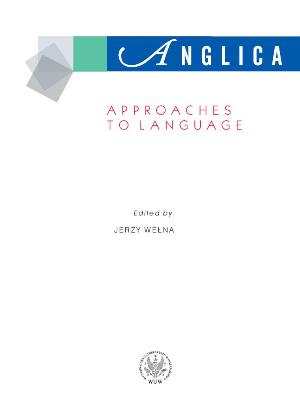THREE VIEWS ON MORPHOLOGICAL PROCESSES IN MIDDLE ENGLISH*
THREE VIEWS ON MORPHOLOGICAL PROCESSES IN MIDDLE ENGLISH*
Author(s): Bernhard DiensbergSubject(s): Language and Literature Studies
Published by: Wydawnictwa Uniwersytetu Warszawskiego
Keywords: MORPHOLOGICAL PROCESSES IN MIDDLE ENGLISH; changes in language
Summary/Abstract: Quite recently, three studies on hitherto not satisfactorily described processes in the area of English historical morphology have seen the light of the day. In what follows they will be examined and commented on in some detail. Volume two of the series Warsaw Studies in English and Historical Linguistics contains Janecka’s monograph on adjectival comparison in Middle English. The introductory Chapter one (1–11) gives, among other things, a critical overview of previous research into adjectival grading, also stating the objectives and method of the present study. Starting from a computer-readable database (p. 32; see also 192a), the author tackles a rather wide field, since not only Old and Middle English morphology (suffixal grading of adjectives) but also syntactic aspects (analytic grading by periphrasis) will play a decisive role. When investigating the reasons for the rise of the periphrastic grading of adjectives, language contact, i.e. the influence of French and (to a lesser extent) of Latin, has to be addressed. Some earlier scholars may have overestimated the role of French (see Ku¨hnelt 1953: 54–65), but there is no denying that French was used not only by the royal scribes (4), but acted as the language of record right into the beginning of the 15th century (see the quotation from Fisher et al., 4; also Rothwell 1994: 45–67).
Journal: ANGLICA - An International Journal of English Studies
- Issue Year: 2011
- Issue No: 20
- Page Range: 19-25
- Page Count: 7
- Language: English

